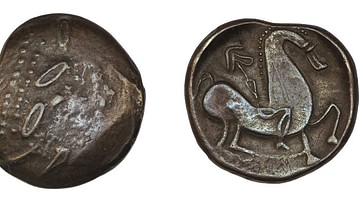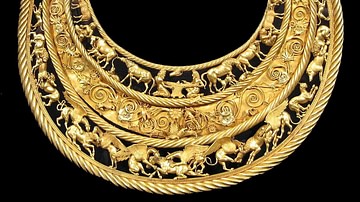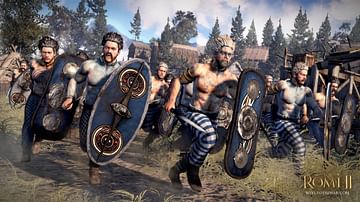Search
Search Results

Image
Celtic Warrior Figurine
A terracotta figurine of a Celtic warrior. Likely a Celtic Gaul. From Egypt, 220-180 BCE. (British Museum, London)

Image
Celtic Coin with Abstract Horse
Celtic coin from modern-day Romania, 3rd- 2nd century BCE. The reverse depicts a horse and helmeted rider while the obverse depicts the head of Zeus, it is one of many imitations of Greek currency to be minted in Celtic Europe in ancient...

Collection
Norse Mythology - A Collection
Norse mythology, the stories of gods and heroes from in and around the Viking Age (c. 790 - c. 1100 CE) in northern Europe, has provided us with some of the most famous figures in world mythology. Here, in this collection, we look at such...

Article
Elves & Dwarves in Norse Mythology
Elves and dwarves represent minor divine figures in Norse mythology. Elves (álfar) and dwarves (dvergar) have in common their talent for creating precious objects, skill, agility, and moral ambiguity. Dwarves appear in several important stories...

Article
A Visual Who's Who of Greek Mythology
Achilles The hero of the Trojan War, leader of the Myrmidons, slayer of Hector and Greece's greatest warrior, who sadly came unstuck when Paris sent a flying arrow guided by Apollo, which caught him in his only weak spot, his heel. Adonis...

Video
Ancient Celtic Religion, Druids and Funerary Beliefs
The Ancient Celtic religion was a polytheistic one, with numerous gods with sometimes overlapping responsibilities. The ancient Celts, who occupied parts of western and central Europe during the Late Bronze Age and through to the Iron Age...

Image
Celtic Warrior, Gaul
A Celtic warrior statue from Gaul. Bronze with glass inlay, 1st century BCE or 1st century CE. From Saint-Maur-en-Chaussée, Oise, France. (Musée départemental de l'Oise)

Image
Celtic Parade Helmet
A Celtic parade helmet in bronze and iron covered in gold with coral inlay, c. 350 BCE. Found buried in a cave in Agris, western France. It is a fine example of the use of vegetal motifs in ancient Celtic art. (Bernisches Historisches Museum...

Definition
Scythian Art
Scythian art is best known for its 'animal art.' Flourishing between the 7th and 3rd centuries BCE on the steppe of Central Asia, with echoes of Celtic influence, the Scythians were known for their works in gold. Moreover, with the recent...

Image
Painted Celtic Warriors
An artist's impression of how Celtic warriors may have looked in battle. Roman writers describe such warriors as wearing blue paint, having long hair dyed blond using lime and clothing with distinctive patterns.